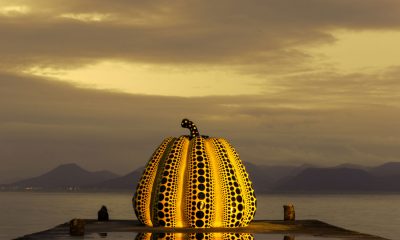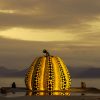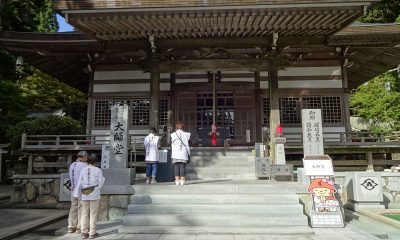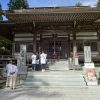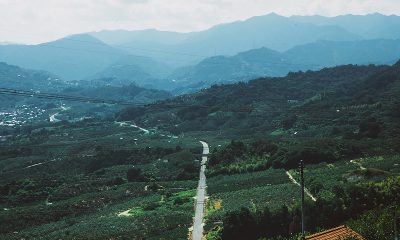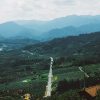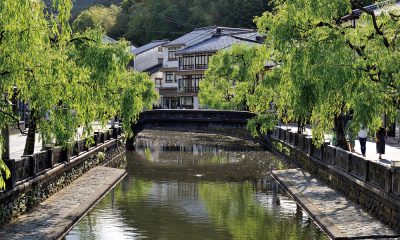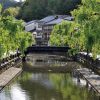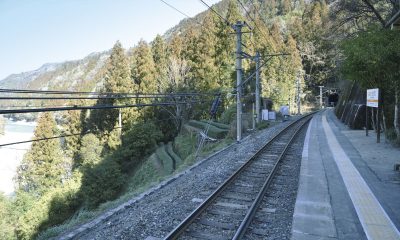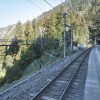Travel
Exploring East Shikoku: The perfect blend of nature, culture, and cuisine
Take the road less traveled and immerse yourself in the gardens, valleys, rivers, and islands of eastern Shikoku.
It may be the least populous of Japan’s four main islands, but Shikoku has boundless adventures to offer. What’s more, it’s easily accessible from Kansai. If you’re looking for a unique and local Japanese experience away from the regular tourist spots, make a loop around eastern Shikoku and discover the prefectures of Kagawa and Tokushima.

Takamatsu to Kotohira: Gardens, Temples, and Udon
Shikoku is easily reached by bus from JR Osaka Station, and a great first stop on the island is the city of Takamatsu in Kagawa Prefecture – home to the majestic Ritsurin Koen. One of the most famous historical landscape gardens in the country, it was built by local feudal lords during the Edo period. The 750,000-square-meter space is filled with ponds, historic trees, tea houses, and even a waterfall. A tour through the garden takes one to two hours and you can choose to go with a volunteer guide, but many of the guides do not speak English, so it may be just as easy to make your own way around. After browsing the lush green gardens and taking in the stunning scenery, treat yourself to a serving of Takamatsu’s renowned local noodle dish – sanuki udon.
While there is plenty more to do in the city of Takamatsu, if you only have a few days to explore the area, take the 40-minute train trip south west straight to the town of Kotohira. This beautiful little town is best known as the site of Shikoku’s largest shrine complex – the Kotohira Shrine. It is an epic climb to the temples at the top – up seemingly endless flights of stone stairs – but the views of the town and surrounding area are truly gorgeous and make the workout worthwhile. The stairway to the top is lined with quaint souvenir shops full of gifts unique to the region – a good excuse to rest weary legs on the way.

Be sure to leave enough time at the end of the day to check out Japan’s oldest surviving original kabuki playhouse – the Kanamaruza Theater, built in 1835. From time to time, this ancient playhouse still stages kabuki shows, but when there are no shows scheduled, visitors are allowed in to get a close-up look at all the trap doors and back rooms of this fascinating old wooden construction.
For dinner, look for a restaurant serving honetsuki-dori – mouth-watering salty fried chicken on the bone – a specialty of the area. There are many accommodation options to choose from in Kotohira. If you’d like to go for something traditional, Kotohira Kadan provides a true ryokan (Japanese inn) experience with tatami (straw mat) rooms and open-air baths.
Kotohira to the Iya Valley: Hills, Bridges, and Gorges
Before saying farewell to Kotohira, do yourself a favor and book a spot in a morning udon-making class at the Nakano Udon School. While it may not be obvious at first, this is no ordinary cooking class. The minute this becomes apparent is when the instructor suddenly starts blaring the K-pop dance tune Gangnam Style by the South Korean artist Psy, directing the class to stand up and knead the dough to the beat of the song! The participants are then ordered to wrap their lumps of dough in plastic and place them on a floor mat where they would jump up and down on top of their parcels to songs like YMCA and boppy J-pop numbers. At the end of this hilariously entertaining class, not only have you had your morning workout, but you get to eat the udon you made with your classmates in the school’s spacious dining room.
From Kotohira, a 40-minute limited-express train will take you further south to Oboke Station from which you can get to Oboke Gorge, one of the most beautiful outdoor destinations in Japan. Oboke Gorge and the neighboring Koboke Gorge (meaning “big dangerous steps” and “small dangerous steps”) are narrow, steep-sided gorges near the entrance to the picturesque Iya Valley. The Yoshino River snakes through these gorges, creating swirling rapids between the jagged, rocky walls – perfect for whitewater rafting, canyoning, and hydrospeed. Several outdoor-adventure companies offer these activities on the river from April to November with half-day tours starting from around ¥5,500. If adventure sports are not your thing, jump on the Oboke Sightseeing Boat Cruise (¥1,080), a gentle half-hour boat ride down the Yoshino River where you can sit back, relax, and admire the marvelous scenery.
One of the most iconic images of the Iya Valley is the kazurabashi (vine bridge). There were once 13 suspension bridges made of mountain vines spanning the Iya Valley, thought to have been built because they were once the only way to easily move people and goods across the river. There are just three remaining today, and the largest and most popular – Iya Kazurabashi – is located just 20 minutes from Oboke Station by bus or taxi, and is well worth a visit if you are already in the area. A picture-perfect spot for a picnic, the bridge stretches 45 meters over the Iya River at the center of the valley. It is rebuilt every three years and is anchored to tall cedar trees at both ends. It can only be crossed in one direction, and crossing over can feel a little unsettling with the open wooden slats beneath your feet!
There are several accommodation options near to the vine bridge. If you are camping, there is the Kazurabashi Camp Village about three minutes’ drive from the bridge, otherwise, Hotel Kazurabashi or Iyahikyo Hot Spring are both good choices.

Iya Valley to Tokushima: Whirlpools, Ramen, and Dance
It’s a two-hour train journey from Oboke to Tokushima. If you can get an early start, you will have time to visit Naruto – the northeastern most city of Shikoku, known for its giant ocean whirlpools. These can be seen in the Naruto Strait underneath the Onaruto Bridge connecting Tokushima to Awaji Island. For an up-close look at these powerful swells, there are two companies that run boat tours from the Tokushima side – Uzushio Kisen and Uzushio Kankosen. Beautiful views of the area can be had from the top of Naruto Park – the center of the activities and attractions surrounding the whirlpools. Don’t miss out on a bowl of signature Tokushima ramen, while you’re in this area.
Tokushima prefecture is also home to the famous Awa Odori summer festival. The Awa Odori dance is a unique and colorful style of dance accompanied by bright, traditional costumes. While the festival only happens in the summer, the Awa Odori Kaikan is a facility that celebrates Awa Odori dance and music throughout the year. Tokushima visitors are invited there to see dance demonstrations in the evenings. These are extremely lively, colorful, and entertaining affairs where the guests are taught the dance and invited to get up and join in. It is an excellent chance to get to know the local people and culture.
Tokushima to Shodoshima: Beach Views, Olives, and Soy Sauce
For your last day in Shikoku, an island-hop to Shodoshima is the perfect stopover before returning by ferry to Honshu. The island was the first area of Japan to successfully grow olives, and is sometimes known as “Olive Island.” (While you’re there, treat yourself to some olive-oil ice cream garnished with a green olive!). This tiny island is also where more than half of Japan’s soy sauce is produced, and the sweet smell of soy brewing wafts through the streets lined with machiya (old Japanese wooden houses). On Shodoshima, there is an olive park, a monkey park, and a spectacular gorge in the mountainous interior called Kankakei Gorge. However, the island is probably most known for a site called Angel Road – a sandbar that connects a chain of smaller islands, and because of tide patterns, can only be seen and walked across twice a day. The site has become popular with couples as it is believed that a couple who walks the sandy path hand-in-hand, without letting go, will be joined in marriage.
The Shodoshima International Hotel is the closest accommodation to Angel Road with nice views of the site. Stay a night and see the path at different stages throughout the day as the tides change.



